Three Days in NYC
Tribeca – Artists in Greenpoint – Sports Legends @ The Waldorf
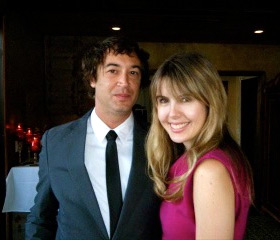

My arrival into NYC coincided with the tail end of the United Nations General Assembly, and my Midtown hotel, The Intercontinental Barclay, was mere blocks from the UN. Security was everywhere, with concrete barricades marked N Y P D in blue block letters at all of the entrances. Sedans and black Suburbans with police escorts blocked the street as one convoy after another whisked world leaders away amidst the sound of sirens.
Saturday night brought me downtown to Tribeca for my longtime friend’s engagement party. I’ve known Jordan Levy since our days at Florida State University where we majored in theatre, studied in London, and backpacked Europe. Later, we both lived in Los Angeles for a stretch – 10 years.
Jordan still lives in LA and works as a commercial cinematographer. You’ve seen his work. He is marrying the lovely Samantha Weisman, who works at William Morris Endeavor.
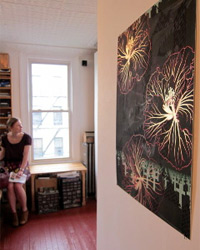
The party was hosted by Jordan’s sister, artist Elissa Levy, and her boyfriend Adam Ames, one half of the artistic duo Type A. The wedding is set for June in Aspen, and since I’m the best man, I should start working on my speech now. The bachelor party is in Miami, so I have that one covered.
After the affair, a group of us ended up at 77 Warren, a chic sports-themed spot co-owned by New York Ranger Sean Avery. The truffle mac-n-cheese was decadent, and the tequila shots weren’t bad either.
The following day I headed to Greenpoint, Brooklyn for a walking tour of artists’ studios. The tour was led by Jordan’s sister, Elissa, and Elizabeth Tenenbaum from InContext Tours.
Greenpoint is a Polish neighborhood that has housed artists for many years, but really came into play during the real estate boom as little cafes and coffee shops made the area more “social.” The neighborhood evolved into an even greater refuge for artists as nearby Williamsburg became far too expensive for studio space.
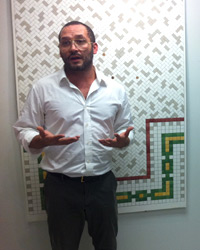
Zoe Pettijohn Schade’s space is entered from an old wooden staircase that smells musky from age but opens into a bright and inspiring studio. Her drawing board overlooks the quaint street below and both her large- and small-scale works hang on the walls. Most of her pieces consist of layered geometric patterns in repeat. Her father is a physicist and her precise technique appears mathematical in nature embodying her father’s field in what I perceive to be a cathartic manner reflecting the father/daughter relationship.
Everest Hall and Yadir Quintana share studio space in a waterfront factory building that could be the setting for a horror film. The ominous layer is guarded by large metal gates. Beyond those gates, past a mud-slicked foyer, two columns of artist studios sit side-by-side and are numbered as bins: Bin 1, Bin 2, Bin 3 … Inside the bin of Hall and Quintana, concrete walls display their works and metal piping runs throughout the ceiling.
Hall’s work is meticulous. Like Pettijohn Schade, some of his pieces display repetitive geometric shapes. Several have an intricate skull with layered reflective nuances that are extremely detailed.
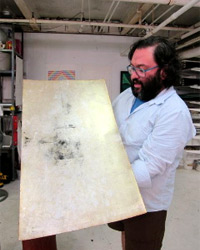
Quintana’s approach is improvisational. In some cases, in fact, his work creates itself. His series of silver on paper involves oxidation of his subjects’ impressions. His commissioned pieces evolve until he and the client determine that it is time for them to be sealed. The process could take more than a year and is large in scale.
Diana Puntar’s studio is several bins from Hall and Quintana’s. Woodworking machinery is placed throughout the space, and her work explores death and the theory of utopia as well as concepts of the infinite. Her woodworking prowess would put many carpenters to shame. One piece resembled a mythical tree stump with a hollow center. Upon looking in, a mirrored bottom created a never-ending effect that exemplified her quest for the infinite.
We ended the tour with a glass of prosecco in the outdoor patio of the quaint cafe Milk and Roses. I highly recommend the artist tour. It’s quite a lot of fun and allows for art lovers and collectors to get inside the heads of the local talent.
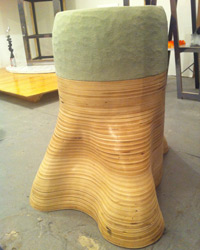
Monday’s main event was The 26th Annual Great Sports Legends Dinner at the Waldorf-Astoria benefiting the Miami Project to Cure Paralysis and the Buoniconti Fund.
The red carpet was a thrilling spectacle for any sports fan. Don Shula, Jerry Rice, Andre Dawson, Ernie Els, Chris Mullin, Harry Carson, figure skater Nancy Kerrigan, hockey great Clark Gillies, and drag racer John Force made their way past the deluge of media. Wayne Newton was even there.
I recognized many Miamians in attendance. Stephanie Sayfie Aagaard and her mother Suzie Sayfie from the Miami Project were flawlessly running the festivities. President Donna Shalala arrived as cocktails concluded. I also saw publicist Charlie Cinnamon, Jenna Green (daughter of Dr. Barth Green) and Nick Arison, Misha Ezratti from GL Homes, Cheryl Stephenson from Bal Harbour Shops (who will be producing Destination Fashion with the Miami Project in March, 2012), Morton Aagaard, attorney James Ferraro (who donated $1 million), Jared Green (son of Dr. Barth Green) and Eli Ricordi (daughter of Dr. Camillo Ricordi), Paul and Swannie DiMare, Bunny Bastian and her daughter Raphael, Henry Gonzalez from Tiffany & Co. (which had a massive display) and photographer Manny Hernandez.
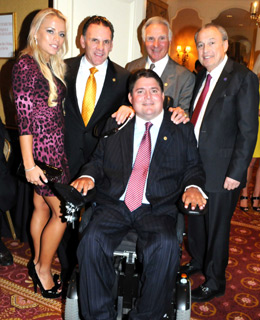
Following the immense silent auction/cocktail reception that encompassed two rooms, the 1,500 plus attendees streamed into the magnificent, three-story grand ballroom. Marc Buoniconti took center stage. The Miami Project was started by his father, famed Miami Dolphins middle linebacker, Nick Buoniconti, following Marc’s paralysis that was the result of a tackle during a college football game.
Marc spoke of destiny, a theme that recurred throughout the night. His injury derailed what he thought was his destiny, to play football in the NFL, and led to a new destiny, to find a cure for paralysis – a goal that is now in the foreseeable future as a result of the research conducted by Dr. Barth Green and his staff at the University of Miami.
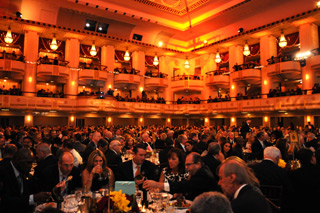
Following Marc’s speech, which included a tribute to his mother, Terry Buoniconti, Bob Costas led the remainder of the night with all of the charm and eloquence that one would expect from the greatest sports broadcaster of our time. A concert by Diana Ross broke up the proceedings, which included speeches by each of the sports legends, and the evening concluded with a touching speech by Nic that reverted back to the night’s theme of destiny. The event raised more than $10 million.
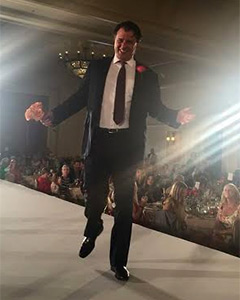
Aaron Glickman is a creator/producer native to Miami. He has worked in South Florida media for the past 15 years documenting a regional transformation predicated on art and design. His digital media platform, www.Current.Miami, tells hyper-local stories through the use of video.
From 2007 to 2016, Aaron was the publisher of SocialMiami.com, a society-driven digital media platform. During that period, Aaron created content-driven strategies with many of the region’s most prestigious brands and institutions. He also served on boards and committees for several non-profits.
In 2017, Aaron produced and directed the feature-length documentary Miami Basel: Art’s Winter Playground. The film tells the story of Art Basel’s influence on Miami. Its world premiere in 2019 at the Miami Film Festival.
Prior to working in media, Aaron was a union stage actor. He studied Shakespeare in London and was a six-year member of Theatricum Botanicum, a classical theater company located in Topanga Canyon, California. In 2016, Aaron returned to the stage to tackle the role of Richard Sherman in “The Seven Year Itch” and is currently doing voice-over work for NBC.


